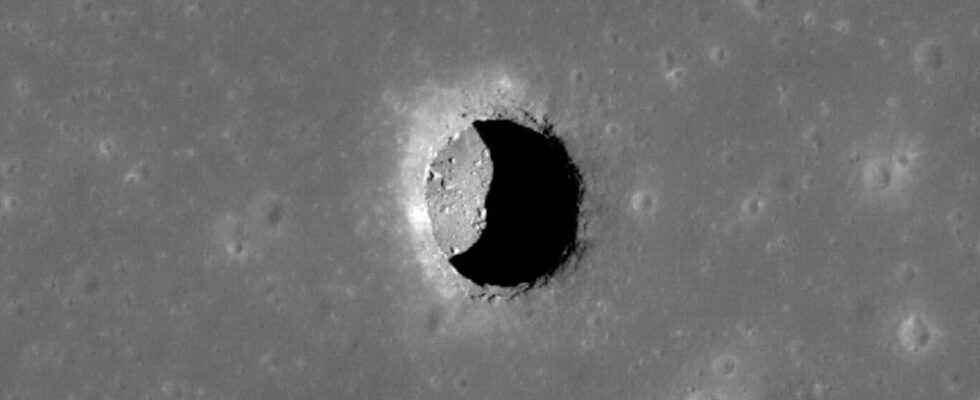There are places on the moon where it’s consistently 17 degrees! No joke – that’s what NASA reports. This is how researchers discovered these locations that could be ideal for a lunar base.
Enlarge
The examined pit on the moon.
© NASA/Goddard/Arizona State University
It’s either very hot on the moon: up to 127 degrees Celsius when the sun shines on our satellite. Or very cold: up to -173 degrees Celsius when it is night on the moon. This fact has been known for a long time. A discovery made by scientists and reported by the US space agency NASA is all the more surprising: there are places on the moon that are constantly around 17 degrees warm. Day and night.
Protected places on the moon
Experts discovered these spots using data from NASA’s Lunar Reconnaissance Orbiter (LRO) spacecraft and through the use of computer models. These are shadowy spots in pits on the moon that may lead to caves. These temperature-stable locations would be suitable for lunar exploration because they are not exposed to the massive temperature fluctuations on the lunar surface. Researchers discovered these pits back in 2009 and since then scientists have been puzzled as to whether they could lead to real caves. Because if these depressions were not just small pits but large caves, then they could be used as shelters or explored. These caves can provide some protection from cosmic rays, solar radiation, and micrometeorites, NASA explains.
Lava tubes make pits
About 16 of the more than 200 discovered pits are likely collapsed lava tubes. Such “lava tubes” form when molten lava flows under a field of solidified lava, or a crust forms over a lava flow, leaving a long, hollow tunnel. When the roof of a frozen lava tube collapses, a shaft opens that can lead into the rest of the cavernous tube. In two such pits, the researchers discovered overhangs that clearly lead to caves or cavities. Or under another discovered overhang there might be a large cave, so the assumption.
Thermal imaging camera measures temperature in the pits
Using the Diviner thermal imaging camera on NASA’s Lunar Reconnaissance Orbiter, which maps the lunar surface, researchers analyzed at one of the pits whether the temperature in the pit differed from the temperature on the surface. The result: The temperatures in the constantly shaded areas of the pit fluctuate only slightly over the course of a lunar day and are around 17 degrees Celsius. If there were a cave at the bottom of the pit, as the images from the Lunar Reconnaissance Orbiter (LRO) camera suggest, the cave would also be at this relatively comfortable temperature. The researchers suspect that the shady overhang is the reason why the number of degrees in the pit is always the same: it makes it more difficult to warm up during the day and slows down the cooling down during the night.
day and night on the moon
A day on the moon lasts about 15 Earth days, during which the surface is constantly illuminated by sunlight and it gets very hot. The extremely cold nights also last about 15 Earth days, as NASA explains.
NASA’s Lunar Reconnaissance Orbiter (LRO).
This orbiter has been orbiting the moon since 2009 at an altitude of between 50 and 200 kilometers. The NASA orbiter is to map the lunar surface. In the past, LRO has already provided images of the landing sites of various Apollo missions, including the Apollo 11 landing site.
